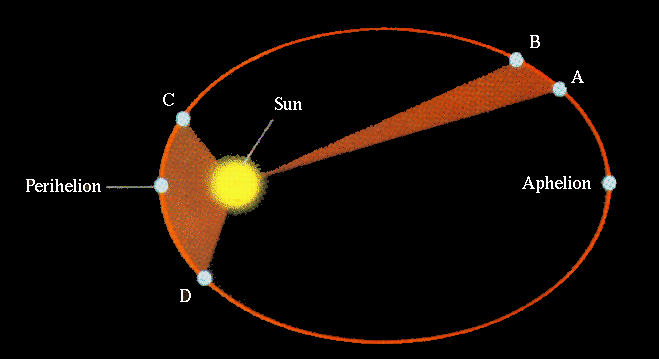
the same areas in equal time intervals. For instance,
the area of the slice from A to B is equal to the area
of the slice from C to D.
*A
straight line
joining a planet to the Sun will sweep out
equal areas in
equal
intervals of
time*
Kepler’s
second law describes the movement of a planet
around a star.
As the planet travels its
orbit,
the closest distance it can be from the Sun is
referred to as the
Perihelion. In
contrast,
the farthest
distance is referred to as the Aphelion.
According to Kepler’s 2nd Law of
Planetary
motion,
objects
will travel faster when nearing the Perihelion,
and slower when nearing the
Aphelion. This
results in the orbit
covering the same amount of area in equal amounts
of
time.
"Nature uses as little as possible of anything."
-Johannes Kepler
Contents
Title Page
Kepler’s First
Law of Planetary
Motion
Kepler’s Second Law of Planetary
Motion
Kepler’s Third
Law of Planetary
Motion